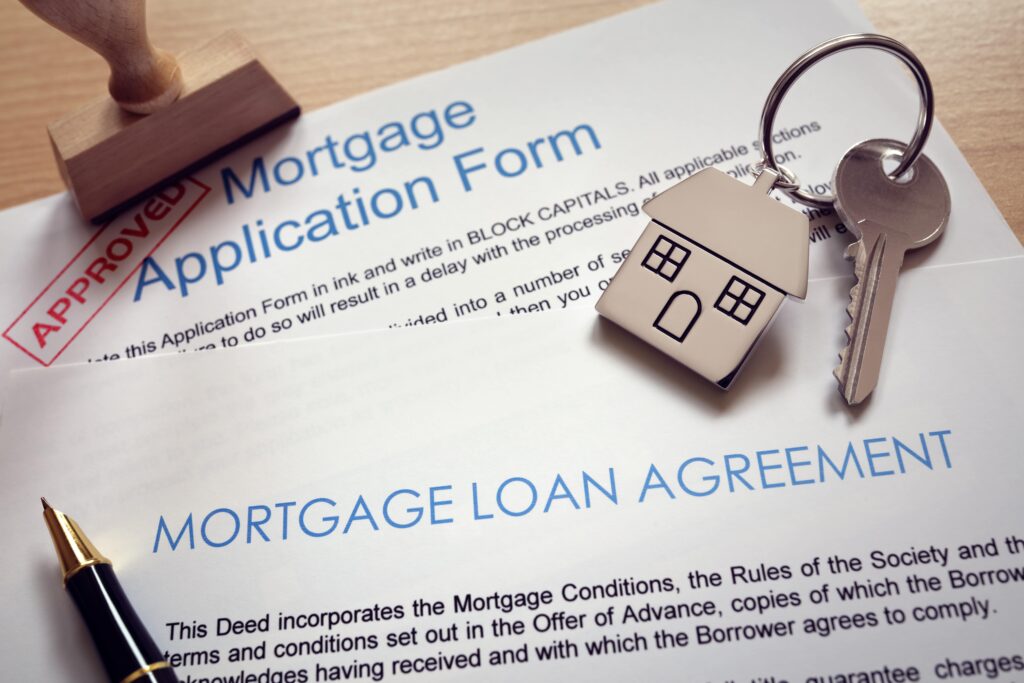Living the American dream of owning a house is a big deal. The luxury and all privileges that come with it are worth every penny. You will probably need a mortgage loan to buy all the luxury you desire.
Now the trick question is, how do you qualify for a mortgage loan? What should you do? Well, not to worry. Help is here.
In this article, we have explained in 5 steps what you need to do to qualify for a mortgage loan. You too can be a homeowner. Keep reading to find out how.
1# Boost Your Credit Score
A credit score is a number that measures how likely it is that a consumer will pay their bills on time and pay their debts as well.
Basically the higher your credit score, the more likely you are to get approved for a mortgage.
You also receive a lower interest rate if your credit score is high. When you’re applying for a potentially large home loan, this is a good thing.
So you might ask, how do I boost my credit score? Well, you should begin by making sure you pay all of your bills on time in the months preceding your application.
Also, you can’t afford to ignore your payment history because it’s the most important factor in determining your credit score.
The real deal-breaker is to pay down a portion of your existing debt next. This will lower your credit usage ratio, which is a measurement of how much credit you have access to at any given time. The lower that number is, the better your credit score will be.
In addition, do not open a new credit card in the weeks (or even months) before you apply for a mortgage. Each time you apply for a new type of credit, your credit report undergoes a hard inquiry, which can lower your credit score.
The bottom line, however, is that government-backed loans are better to choose from than conventional loans.
For example, you need at least a 500 credit score for an FHA loan, whereas for conventional loans you need a 620 credit score or higher. Other types of government loans are USDA loans and VA loans.
2# Monitor Your Debt-to-Income Ratio
Having a good credit score, a stable income, and paying all your bills on time are all important factors a lender needs to consider before approving a mortgage.
However, if your monthly bills consume too much of your income, lenders will look at that as well.
Lenders look at your debt-to-income ratio when they evaluate your application for a mortgage. So while you are trying to get a good credit score, you should monitor your debt-to-income ratio as well.
Lenders assess ratios in two different ways:
- The Front end ratio
Alternatively known as the mortgage-to-income ratio or housing ratio.
This ratio indicates how much of your income goes towards mortgage paymentsincluding
So to calculate your front-end ratio, you simply add your monthly housing expenses and divide them by your gross monthly income. Once you get your result, you then multiply it by 100.
- The Back end ratio
The Back end ratio, however, shows what percentage of your income you would have to borrow to cover your monthly expenses.
This includes your mortgage and other housing costs, loans, and debts.
To calculate the back-end ratio, add up all your monthly debt payments, including your housing expenses. And then divide the result by your gross monthly income.
Most lenders would rather prefer front-end ratios not to exceed 28 percent and back-end ratios not to exceed 36 percent, including all monthly debts.
So this means for a gross monthly income of $8000, your front-end ratio should be $2,240 which is 28 percent of $8000. While your back-end ratio should be no more than $2,880 per month, which is 36 percent of $8000.
3# Go Big With Your Down Payment
Down payments are payments made by a buyer at the start of the buying process to purchase a costly item or service.
They prove to a lender that you know how to save. Large down payments reduce your loan-to-value ratio, improving your chances of getting a mortgage loan
Sometimes lenders ask for down payments of at least 20 percent, but the higher your down payment, the higher your chances of getting a mortgage loan.
Furthermore, putting down a larger down payment upfront will help you qualify for a lower mortgage rate by reducing the lender’s risk.
You may also pay lower fees (both upfront and continuing) and save the monthly expense of private mortgage insurance if you satisfy the 20 percent requirement.
4# Have a Good Work History
This is another aspect you should take note of, having a good work history.
A lender will calculate your typical income based on your income from the previous 24 months when calculating your ability to pay (and thus how much house you can buy).
If you’ve had the same job for the past two years and have the same income and pay structure, getting a mortgage should be relatively simple.
But, if any of those factors have changed in the last two years or will change soon, you may face difficulties.
However, your mortgage application should not be affected if your income and responsibilities increase from job to job.
If you have gaps in your employment history, you may still qualify for a mortgage if you can demonstrate that your income is sufficient, consistent, and ongoing.
5# Choose A House In Good Condition
Finally, lenders want to ensure that the home you’re purchasing is in good condition and worth the price you’re paying.
A house inspection and appraisal are usually required to ensure that the lender isn’t lending you money to embark on a disastrous real estate transaction.
If severe flaws are discovered during the house inspection, the issues may need to be addressed before the loan can be closed. The appraised value of your house also impacts how much money you can borrow from a lender.
It’s Time For That Loan
There you have it. How to qualify for a mortgage in five steps! Now it’s time for that loan.
Our experts at Quikfund mortgage company are always ready to guide you through a stressless journey to becoming a proud homeowner.
With mortgaging, you can go big. So let us give you the best mortgage experience. Contact us now!








